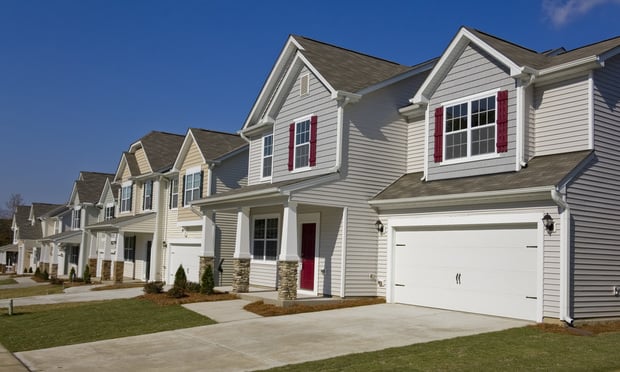The housing crisis is well documented. The nation is short 7.3 million affordable homes needed to meet current demand, and there are now more that 12.1 million severely cost-burdened renter households – an all-time high and 1.5 million more households than before the pandemic
According to Bryan Dickson, senior managing director at NewPoint Real Estate Capital, while LIHTC is the predominant resource available to help create and preserve affordable housing, a broadening of tax credit programs and financing tools is more than warranted.
The crisis has spurred a bipartisan Congressional effort to expand the current LIHTC program—a critical piece of an affordable housing financing deal. The plan includes reinstating the 12.5% annual increase in 9% LIHTC allocations for 2023 through 2025 (a program that expired in 2021), as well as reducing the 50% private activity bond financing threshold for 4% LIHTCs to 30% for 2024 and 2025. These measures are included in the Tax Relief for American Families and Workers Act of 2024, which passed the House by a large margin but has sat with the Senate since early February.
Recommended For You
Plugging Gaps in the Capital Stack Notoriously, affordable housing has a complex capital stack with multiple sources of debt and equity, which can obstruct investment in the sector. Affordable housing stakeholders often utilize LIHTC to provide a significant portion of equity. Dickson notes that federal tax credit equity can make up 35% of the capital stack in an exempt bond deal and about twice that much for a 9% deal. "It's a huge resource," he says. "And expanding tax credit programs could really help to build out the stack further."
The current higher interest-rate environment has further complicated affordable housing deals, stretching out the gap between the sources and uses of funds in a deal. Dickson says that this is one of the most challenging environments that he has seen over the course of his 20-year career, and that the environment underscores the need for additional resources. Expanding the federal LIHTC program, promoting state LIHTC programs, and creating new tax credit programs will help bolster the equity side of the equation and invite more entities to participate in affordable housing.
One new initiative is the Workforce Housing Tax Credit (WFHTC), a bipartisan proposal that aims to provide relief to middle-market renters, who are equally cost burdened but don't meet the AMI thresholds needed to access subsidized housing. "This would be another tool to address the missing middle of affordable housing," Dickson says. "We've seen support coming out of the FHFA and Agencies to assist households in the 80% to 120% AMI range by offering financing pricing incentives, and a workforce tax credit could bolster that with a reduction in the developer's federal tax liability."
Leveraging Alternative Tools
In addition to the federal LIHTC program, state and local governments have also developed incentives and tax programs support affordable housing. More than 30 states and Washington DC now have their own LIHTC programs, and there are proposals for programs in Mississippi and North Carolina.
"While annual allocation values vary significantly, there is significant opportunity in places like California, New Jersey, Ohio, New York, and Massachusetts," Dickson said. "In Washington, DC, for example, local credits were introduced just six years ago and are now included in the modeling for nearly all affordable deals."
Lenders like NewPoint have also listened to the market and developed new products to give affordable housing investors more options to round out the capital stack and generate more proceeds. "Because of the acute affordability crisis, it takes significant subsidy to drive financing costs down enough so that they're affordable," says Dickson.
One offering of the firm's NewPoint Impact platform is tax-exempt bond financing, which has received much attention from developers due to its ability to lower the cost of permanent debt. The financing program was even flexible enough to work in the absence of LIHTC in a recent financing utilized by The NHP Foundation to acquire a 128-unit community in Washington, DC. NewPoint also built a construction-to-perm offering that utilizes longer amortization to generate more significant proceeds. Dubbed NewPoint Impact Synthetic 221(d)(4), the structure provides proprietary expedited construction or rehabilitation financing that converts into an FHA 223(f) permanent loan.
The creation of these tools shows that the private sector support for affordable housing is particularly powerful when paired with their public counterparts. "Finding creative solutions to affordable housing finance challenges is one of the cornerstones of NewPoint," says Dickson. "It's that entrepreneurial spirit that sets us apart."
For more thought leadership from NewPoint Real Estate Capital, click here.
© 2025 ALM Global, LLC, All Rights Reserved. Request academic re-use from www.copyright.com. All other uses, submit a request to [email protected]. For more information visit Asset & Logo Licensing.








